
We spend a lot of our waking hours in the workplace so it’s no surprise that work and personal life impact each other. It’s an issue we mustn’t ignore. Many of us have been trained or at least socialised to separate our ‘professional selves’ from our ‘personal selves’. To put on our ‘worker’ hat at work, our ‘parent’ and ‘partner’ hat at home, and our ‘volunteer’ hat at weekend sports events. We juggle the different parts of ourselves, keeping our guards up and being careful not to cross boundaries. READ “HOW MANY HATS DO YOUR WEAR?”
But can we completely separate the different parts of our lives? And should we? What are the implications, both good and bad? And how can we re-integrate ourselves when we feel like we can’t keep it all together, or when there is a major change in our work or personal lives?
The real mental health issues in the workplace
Employees, managers and business owners are all in the same boat. Where do we even begin to sort out the issues? In late 2018 Bel du Bois from Darling Downs Wellness Therapies and myself surveyed our community. The results were really interesting. 54% of people said that multiple roles and responsibilities was one of the main health and wellness concerns in their workplace. Stress, unrealistic workloads and communication difficulties also rated very highly.
The struggle to keep it all together
I know first hand what it’s like to juggle family and work responsibilities, and *try* to be calm about it all. Many of us struggle with it, yet few of us talk about it openly. We feel pressure to appear to be coping, on top of things, and to have it all together. But pretending everything’s okay doesn’t make the stress go away. Work, family, home and personal health all suffer.
Whose responsibility?
There is increasing pressure on workplaces to address mental health and wellness issues. This is great because instead of sweeping it under the carpet, we’re beginning to talk about, to acknowledge it and to manage it better.
Obviously the responsibility doesn’t sit entirely with our workplaces. We also need to address industry regulations, state and national policy, and cultural norms.
As individuals we also need to take a degree of responsibility for those things within our control – that means taking a good hard look at ourselves, our reactions in stressful situations, our attitudes, our behaviours, and the supports we choose (or don’t choose) to access.
What this means is that to improve mental health we really have to take a multi-tiered  approach. We must support workplaces and managers and business owners to create a mentally healthy culture. We need to advocate for industry reform, policy and legislation that reflects a mentally healthy culture. And we need to support individuals and groups in our community to develop inner skills and behaviours (that is, the things we can control!) that enhance mental health. Read on for some tips on how you can begin to put mentally healthy actions in place today.
approach. We must support workplaces and managers and business owners to create a mentally healthy culture. We need to advocate for industry reform, policy and legislation that reflects a mentally healthy culture. And we need to support individuals and groups in our community to develop inner skills and behaviours (that is, the things we can control!) that enhance mental health. Read on for some tips on how you can begin to put mentally healthy actions in place today.
7 ways to improve your mental health at work
1. Remember that you are a human, not a robot. Life isn’t all smooth sailing, blue skies and cheery hearts. You have thoughts and emotions. They are real. You react to the world around you. The world around you reacts to you too.
2. Find your tribe. A supportive, open, caring community around you is what we all need. If you don’t have that, take steps to create it.
3. Build your resilience – physical and mental. The best ways to begin doing this are through exercise, having active hobbies, feeding yourself nutritious food, getting good quality sleep, and developing a powerful mindset.
4. Expand your stress management skills. You can never have too many tools in your “Coping Kit”! Read books and articles on stress management. Go to workshops. Find a counsellor. Listen to podcasts. Do an online course.
5. Find constructive ways to address your workplace issues. This may mean direct communication with your employer, industry, union or association. There may also be changes you can initiate yourself that will make all the difference eg renegotiating your work hours, equipment available for you to do your job, or the length of your lunch break.
6. Make choices that nurture your mental health and physical health. Often it’s the little things that make the biggest difference, such as choosing to go for a walk at lunch time. But sometimes we need to muster up the courage to make the bigger decisions, such as changing jobs or moving locations.
7. Ask for help. If the first person doesn’t support you in the way you need, ask someone else. Keep going until you find the right person. There are so many online resources these days that you’re no longer limited to what’s available in your local area.
Ready for more?
If you relate to anything in this post, I’d love you to join me for The Wellbeing Project, a collaboration between myself and Bel du Bois from Darling Downs Wellness Therapies. We’ll be delving into these topics (and more!) in detail in our dynamic, interactive workshop “Wellness in the Workplace” to be held in Warwick on Wednesday 13th March 2019. You’ll get the latest evidence-based information and proven skills and strategies to function at your best in the workplace and in your personal life. You’ll learn techniques to build your resilience, have more energy, manage your work and home stresses, and feel healthier and happier.
Creating and facilitating workshops brings me a lot of joy. I love knowing that I’m making a difference to a room full of people instead of only one person at a time. Bel and I have thoroughly enjoyed our planning meetings at the beautiful cafes around town and we’ve got so much amazingness in store for you. This workshop is definitely not a typical ‘dry’ boring training day!
So …..
Are YOU ready to re-energise, grow your coping skills, discover strategies and techniques to use at work and home, learn ways of communicating effectively with different personalities, and discover resources and supports to guide you into the future? You can have all of this when you choose to take positive action towards better health and wellness at work by investing one day of your life in “Wellness in the Workplace”.
Read more information or make a booking for “Wellness at Work”
More workshops coming soon! Subscribe so you don’t miss out!
Discovering mountain biking as life’s ultimate parallel universe in her middle age, Kathryn Walton shares information and reflections in ‘Daisy Spoke’ that inform, inspire and empower women to a healthy and active lifestyle.

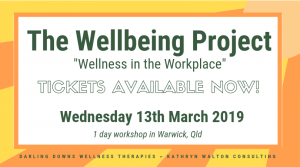

 So first of all, make sure you GET THE BIG ROCKS IN YOUR LIFE FIRST. They are your priorities so take steps to make sure you allow plenty of time and energy for them. Next put in your medium-sized rocks. Your small rocks go in after that and will be able to settle into the spaces between the bigger rocks. You can be more flexible with how they fit into your life. Next comes the sand. These things will be able to flow into the spaces that you have left. If there isn’t time and energy for them right now, that doesn’t matter. When things settle, they’ll have a place in your bucket once again.
So first of all, make sure you GET THE BIG ROCKS IN YOUR LIFE FIRST. They are your priorities so take steps to make sure you allow plenty of time and energy for them. Next put in your medium-sized rocks. Your small rocks go in after that and will be able to settle into the spaces between the bigger rocks. You can be more flexible with how they fit into your life. Next comes the sand. These things will be able to flow into the spaces that you have left. If there isn’t time and energy for them right now, that doesn’t matter. When things settle, they’ll have a place in your bucket once again. 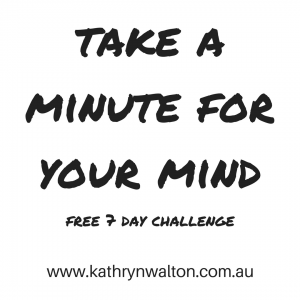
 Click here to read my last blog post
Click here to read my last blog post 
 example of mine was
example of mine was 
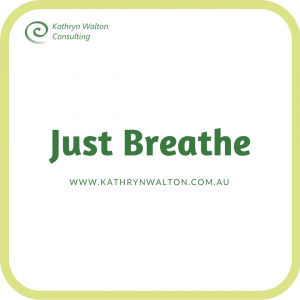 You can collect them from songs, poems, books and social media in addition to listening to your own inner wisdom. Write them on sticky notes, in a journal or diary, print out visual reminders to stick around your home or workplace, or even use them as screen savers and wallpapers on your electronic devices. Some examples include “Just do it”, “One drop raises the ocean”, “Keep it simple”, “Just breathe”, “Stand tall”.
You can collect them from songs, poems, books and social media in addition to listening to your own inner wisdom. Write them on sticky notes, in a journal or diary, print out visual reminders to stick around your home or workplace, or even use them as screen savers and wallpapers on your electronic devices. Some examples include “Just do it”, “One drop raises the ocean”, “Keep it simple”, “Just breathe”, “Stand tall”.
 lying on the beach, your stresses trickling away into the sand beneath you) or to help you progress towards a goal (eg visualise yourself speaking in front of an audience, feeling confident, upright posture, smiling, relaxed). When I’m feeling nervous about riding my bike on a particular section of track, I stop for a few moments and picture myself riding it the way I want it to go, as if I’m watching a short video of myself successfully negotiating that section. It truly is a powerful mind-based strategy and one you can use in every area of your life.
lying on the beach, your stresses trickling away into the sand beneath you) or to help you progress towards a goal (eg visualise yourself speaking in front of an audience, feeling confident, upright posture, smiling, relaxed). When I’m feeling nervous about riding my bike on a particular section of track, I stop for a few moments and picture myself riding it the way I want it to go, as if I’m watching a short video of myself successfully negotiating that section. It truly is a powerful mind-based strategy and one you can use in every area of your life.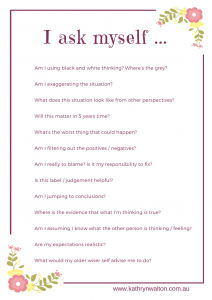 the mix. And to help you keep your strategies in play, I’ve created a free printable for you. “I ask myself …” is a beautiful keepsake of the helpful questions listed above. You can
the mix. And to help you keep your strategies in play, I’ve created a free printable for you. “I ask myself …” is a beautiful keepsake of the helpful questions listed above. You can 

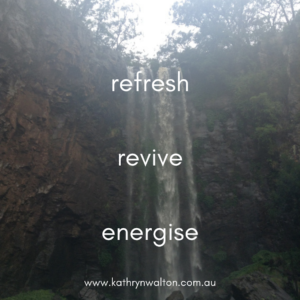
 Kathryn Walton shares information and reflections in Daisy Spoke that connect, inspire and self-empower women to make healthy choices for themselves.
Kathryn Walton shares information and reflections in Daisy Spoke that connect, inspire and self-empower women to make healthy choices for themselves.